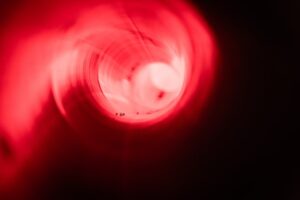
Electrical engineers at the UCLA have figured out a way to improving the performance of imaging, sensing, and communication systems. Finding an efficient way to convert the wavelength of light is vital to improve different imaging and sensing techniques. For example, converting incident light to terahertz wavelengths enables imaging and sensing in an optically opaque environment. However, previous conversion frameworks weren’t as efficient and required big, complex optical setups.
“By this new framework, wavelength conversion occurs simply and with none additional added supply of power because the incoming mild crosses the sphere,” said the lead creator Deniz Turan.
The team members were successful in converting a light beam with a wavelength of 1,550 nanometers into a terahertz portion of the spectrum, ranging from 100 micrometers to 1 millimeter. The researchers demonstrated wavelength conversion efficiency by using new technology for endoscopic probes that can be used for detailed imaging and spectroscopy.
Without this new breakthrough in wavelength conversion, much higher power levels would have been required to achieve the same terahertz wave, which the thin optical fibers used in endoscopic probes would not support. This advance can be applied to light wavelength conversions in other parts of the electromagnetic spectrum, from far-infrared wavelengths to microwaves.






